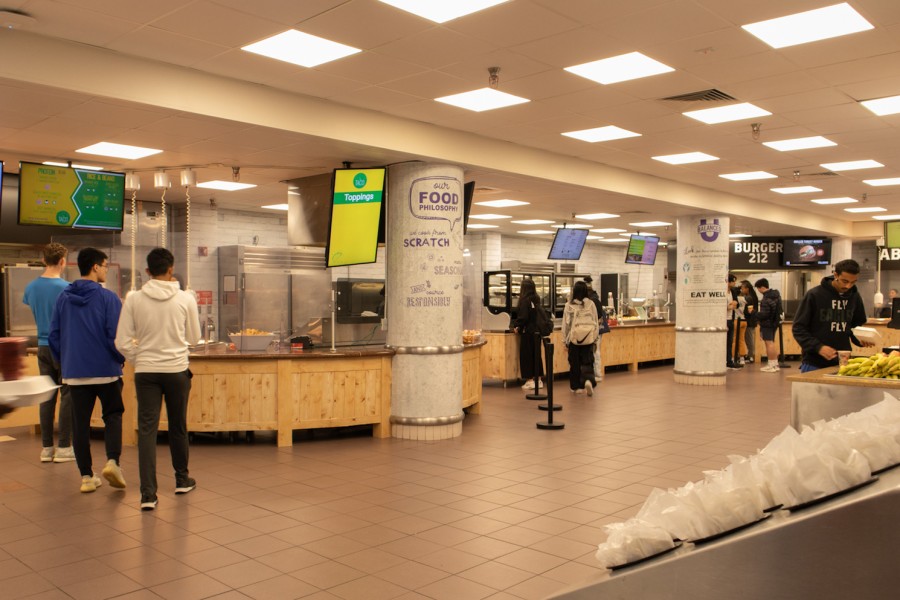Opinion: NYU’s markets are unusable with their expensive prices
The university’s campus convenience stores: a concept that only works in theory.
File photo: NYU’s Palladium dining hall. (Natalia Kempthorne-Curiel for WSN)
April 28, 2023
NYU’s dining hall hours suck. The good locations are never open late, and even the mediocre ones run out of food long before they close. That’s part of the reason why NYU has campus convenience stores, located in University Hall, Lipton Hall, Third Avenue North, PalladiumHall and Weinstein Hall.
These shops allow students to grab cleaning supplies, utilities, and food to go, including items like snacks and ramen that can be kept in dorm rooms for late-night cravings. Sidestein (Weinstein’s convenience store) and UHall’s market are open much later than the dining halls. These campus stores sound great in theory, especially with finals week coming up. But the cost of goods in these stores makes them essentially unusable for many students.
Last semester, I remember shopping at the Market at Palladium for frozen meals, and finding pizza for a surprisingly reasonable price, something I wasn’t used to in New York City. However, when I went to the register to pay with my Dining Dollars, I was charged nearly two times the prices listed. The cashier told me that they had mistakenly left last semester’s prices up on the board. That’s right, the price for frozen pizza had almost doubled over the course of a semester.
“The NYU Dining team reassesses pricing twice a year and conducts a detailed market basket analysis (benchmarking our prices to local retailers) to determine pricing,” said Ronni Mandell, the senior director of marketing at Campus Services. “Over the fall and spring terms, we have seen unprecedented pricing increases in our supply chain so our prices have increased.”
NYU can’t control price fluctuations due to supply chain issues, as global supply chain problems are causing higher expenses and delayed shipments with the food industry being hit the hardest. But at the same time, the university needs to recognize that the prices in the campus convenience stores make them inaccessible. For example, a box of cereal costs $8 at Sidestein, but you can get unlimited cereal, salad, pizza, fruit, and all other kinds of things at many of the university’s buffet-style dining halls for just one $15 meal swipe. At dining halls you’re able to eat as much as you want while also taking home extra, which is less constraining than using up your Dining Dollars.
While meal swipes can be used for a few salads, pastries and sandwiches — which are usually picked clean by the end of the day — the campus stores typically accept only Dining Dollars. Meal plans have inched upward in price, but the amount of Dining Dollars provided in each plan has remained the same, with the standard plan having 14 meals a week with $200 Dining Dollars for the semester. The $200 in Dining Dollars afforded to students on the standard plan went much further just two years ago than it does today.
Mandell explained that because NYU doesn’t order as many goods in bulk from Amazon or the typical grocery store, prices are sometimes higher. If anything, students should be paying less than market price shopping at an NYU establishment versus an off-campus grocery store.
Dining Dollars are the only truly flexible part of a meal plan because they don’t come with the inherent restrictions of a meal swipe. The existence of campus convenience stores lets students use these dollars for last-minute snacks, toiletries, stationery and more. The university should increase the amount of Dining Dollars that come with each meal plan, or at least subsidize some of the cost increases caused by inflation.
WSN’s Opinion section strives to publish ideas worth discussing. The views presented in the Opinion section are solely the views of the writer.
Contact Naisha Roy at [email protected]
























































































































































